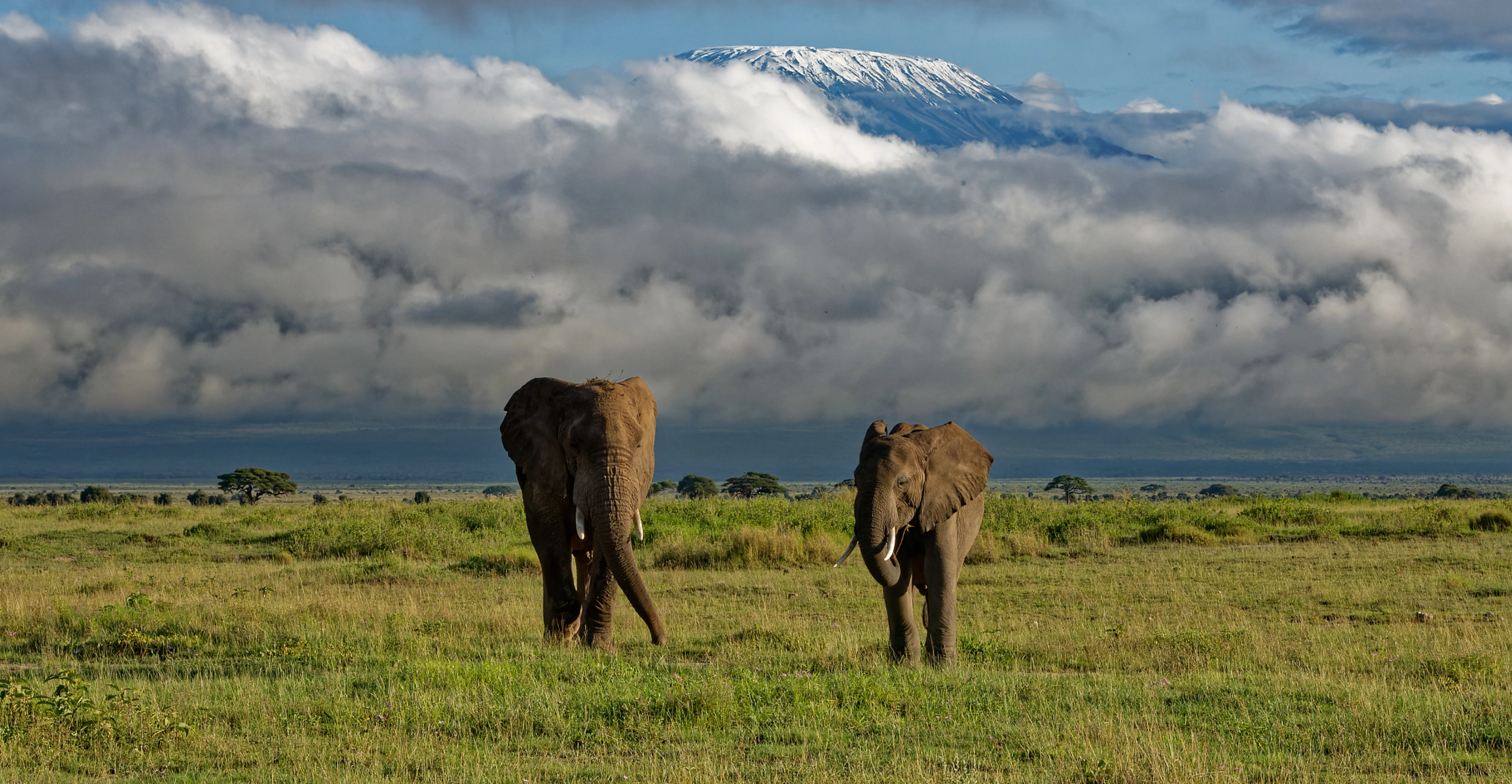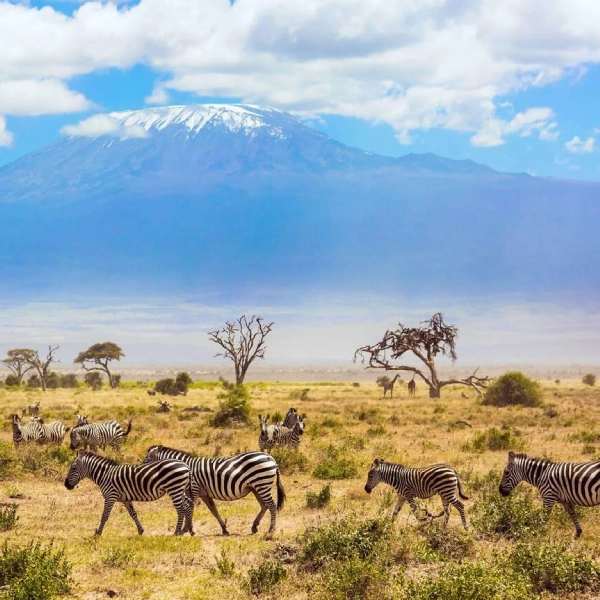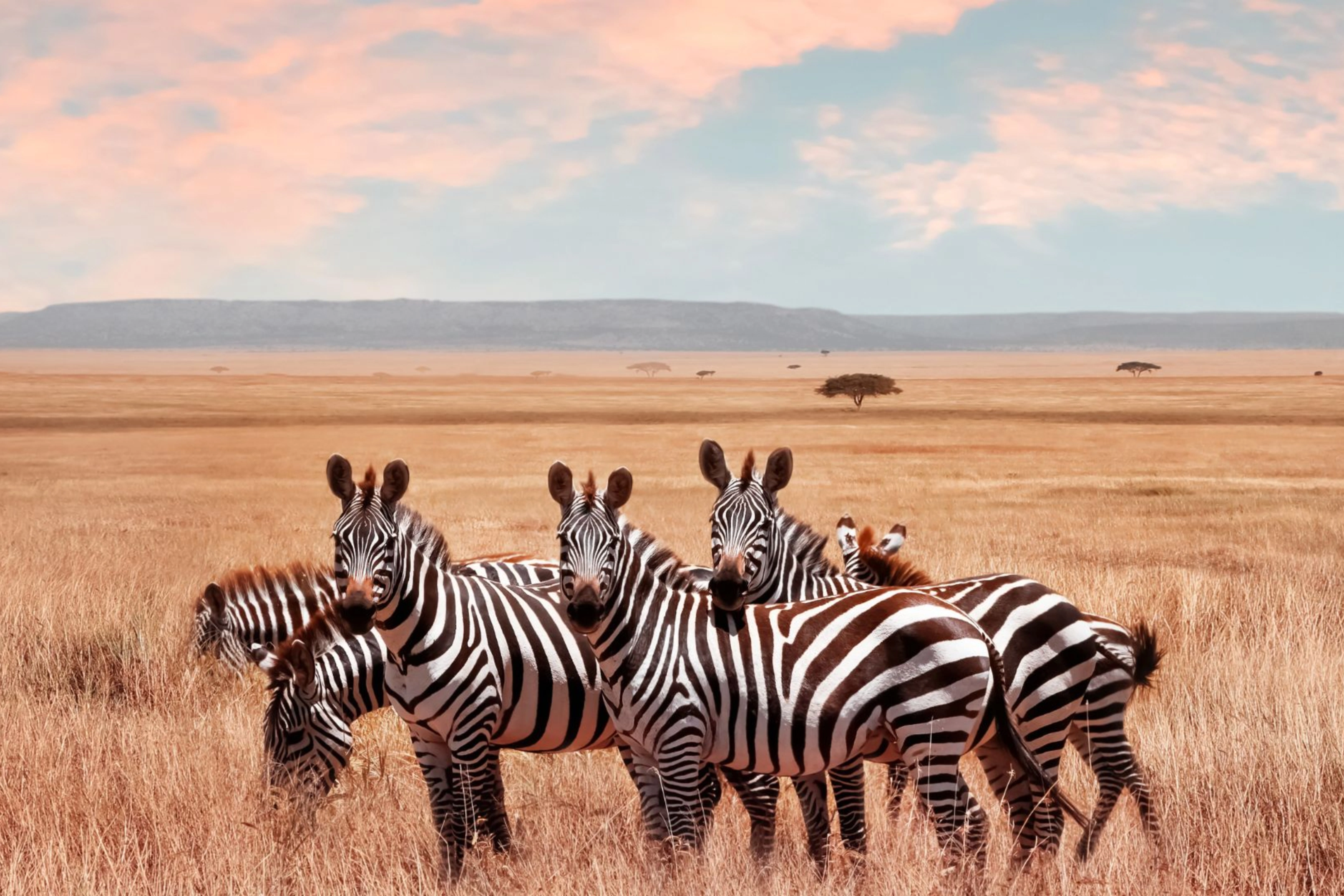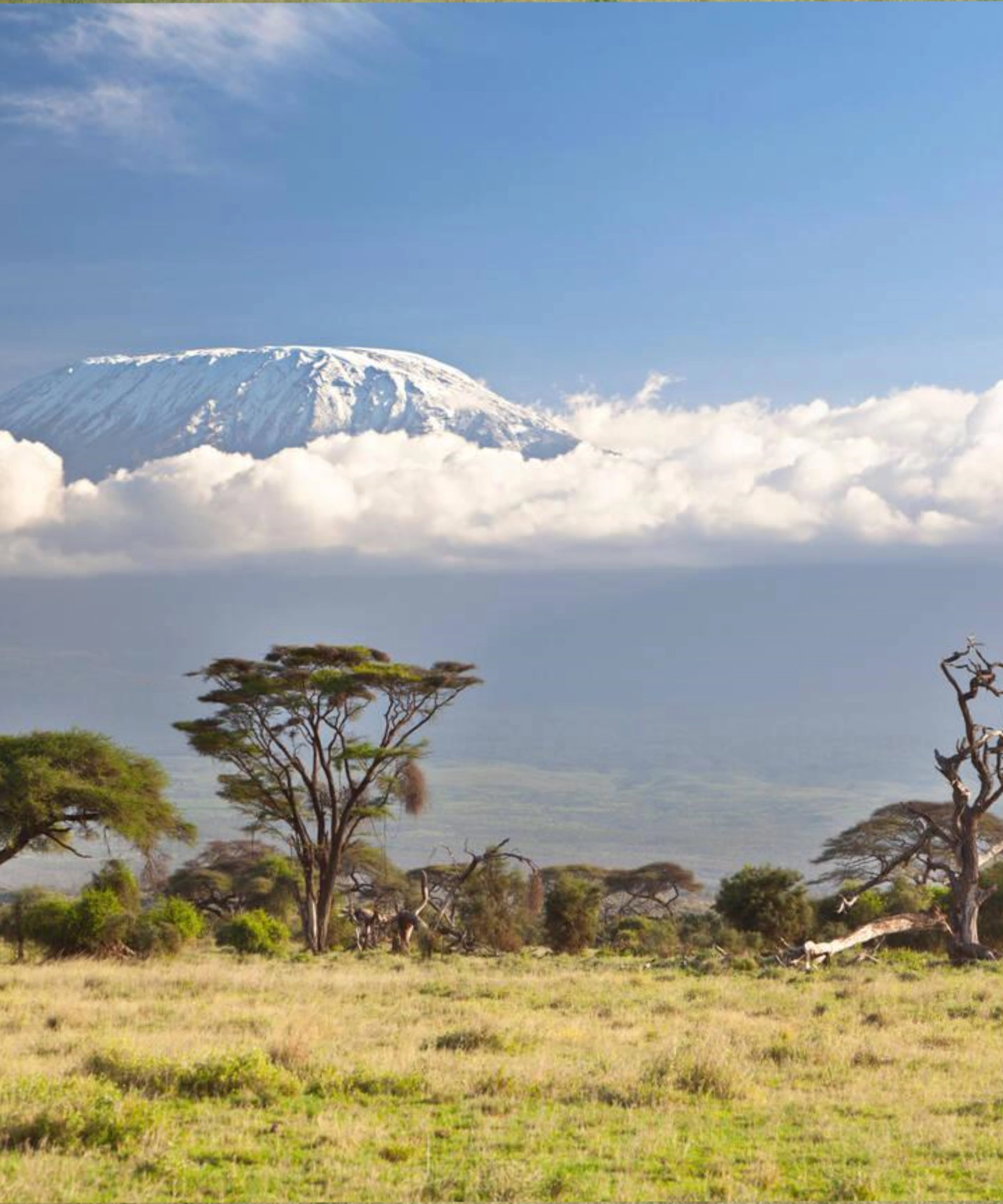





Kilimanjaro National Park is home to Africa’s tallest mountain—Mount Kilimanjaro, standing at 5,895 meters. It’s not just Tanzania’s crown jewel, but the world’s highest free-standing mountain and one of the famed Seven Summits. The park attracts thousands of hikers each year, all hoping to reach Uhuru Peak and witness the clouds from above.
But Kilimanjaro is more than just a climb. As you hike through its trails, the landscapes shift dramatically—from tropical forest and alpine moorland to snow-covered summit. Along the way, you might spot buffalo, blue monkeys, and even elephants near the lower slopes.
Located near the town of Moshi, the park spans approximately 650 square kilometers and is managed by TANAPA.

Whether you're trekking or simply exploring, Kilimanjaro National Park offers an unforgettable blend of challenge, natural beauty, and raw mountain splendour.

Kilimanjaro National Park, Tanzania
3.0499° S, 37.3598° E

The best months for climbing are January to March and June to October. These periods offer clearer skies, safer trails, and stable weather for summit attempts.
Avoid the long rainy season from March to May. November also sees short but slippery showers.
Kilimanjaro's climate changes with elevation. The base is warm and tropical, while higher altitudes can get cold. Rainfall mostly occurs from March to May and November.
Expect drier trails from June to October and January to early March. Snow is common on the summit.
Climbing Mount Kilimanjaro is the park’s top activity, with multiple scenic routes. Wildlife viewing is possible in the lower forests.
Other highlights include breathtaking crater views, alpine deserts, bird-watching, glacier spotting, and traversing five distinct ecological zones in a single hike.
Kilimanjaro International Airport (JRO) is the main gateway, situated between the towns of Arusha and Moshi. Many tour operators offer airport pick-ups and complete climbing packages.
You can also reach Moshi by road from Arusha or Dar es Salaam using public or private transport.


Before venturing into Tanzania’s landscapes and wildlife reserves, securing a visa is a must.
Learn More
The cost of a Tanzanian safari depends on various factors, including accommodation, activities, and the season.
Learn More
Food on a Tanzania safari is more than just sustenance—it’s a memorable part of your journey in Tanzania.
Learn More
Planning your Tanzania safari is exciting, but packing the right items is key.
Learn More
Tanzania is a top destination for nature lovers and adventure seekers. From iconic safari drives to beach.
Learn MoreYes, most travelers will need a Tanzania tourist visa to enter the country. You can either apply for your visa in advance at your nearest Tanzanian Embassy or Consulate or obtain one upon arrival. Tourist visas on arrival are available at major entry points, including Dar es Salaam, Kilimanjaro International Airport (JRO), and Zanzibar, as well as land border crossings such as Namanga and Holili. The standard tourist visa allows a stay of up to 90 days. However, travelers from certain countries may be required to apply in advance; therefore, it's best to check the most recent visa regulations before your trip.
The best time for Tanzania safaris is typically from June to October, during the long dry season. This is when wildlife is easiest to spot as animals gather around permanent water sources, and the vegetation is less dense. The weather is sunny, clear, and ideal for game drives.
However, if you want to witness the Great Wildebeest Migration in the Serengeti, then January to March (during the calving season) and June to July (when the animals cross the river) are also excellent times to do so. While April and May bring heavy rains and some lodges close, the green season from November to early March offers fewer tourists and lush landscapes, perfect for birdwatching and photography.
Tanzania is home to some of the best wildlife viewing in Africa, with an extraordinary range of animals spread across national parks such as the Serengeti, Ngorongoro Crater, Tarangire, and Selous Game Reserve (formerly known as Nyerere). You can expect to see all of the Big Five—lion, elephant, buffalo, leopard, and rhino—as well as cheetahs, zebras, giraffes, wildebeests, hippos, crocodiles, warthogs, and spotted hyenas.
The country is also a paradise for birders, boasting over 1,000 bird species, including flamingos, ostriches, secretary birds, and colorful bee-eaters. Whether you’re on a classic game drive, a walking safari, or a boat safari, Tanzania’s wildlife encounters are always memorable.
The food on a Tanzania safari is delicious, fresh, and varied. Most lodges and camps offer full-board service, which includes breakfast, lunch, and dinner. Meals typically feature a mix of continental and local Tanzanian cuisine, with plenty of fruits, vegetables, grilled meats, rice, potatoes, and flavorful soups.
Vegetarian, vegan, gluten-free, and other dietary requirements can be catered to with advance notice. Breakfast usually includes eggs, sausages, toast, fruit, and porridge or cereal. Lunch is often a light buffet or packed lunch during game drives. Dinners are more elaborate, usually served as multi-course meals around a campfire or in open-air dining tents.
A good Tanzania safari packing list includes practical, comfortable, and lightweight clothing suitable for warm days and cooler nights. Earth-toned clothes are ideal for blending in with the environment and repelling insects.
Here’s what to pack:
Avoid bright colors and camouflage clothing. If you’re visiting Zanzibar or urban areas, it's recommended to wear modest attire.
Yes, certain vaccinations are recommended, and yellow fever vaccination is required if you are arriving from or have transited through a country with a risk of yellow fever transmission. Proof of vaccination is typically not required for travelers coming directly from Europe or North America; however, it may be requested at specific entry points.
It’s also strongly advised to take anti-malaria medication, especially if you are traveling to lowland and coastal areas. Consult your doctor or a travel health clinic at least 4 to 6 weeks before departure to receive any necessary immunizations, such as Hepatitis A, Typhoid, Tetanus, and Rabies, depending on your travel plans and the length of your stay.
Tipping is not mandatory in Tanzania, but it is customary and appreciated, especially in the safari industry, where staff and guides often rely on gratuities to supplement their income. A general guideline is to tip $20–$25 per day for your safari guide, depending on your satisfaction with the service.
For lodge and camp staff, a communal tip box is typically provided at reception, and a tip of around $10 per guest per day is considered appropriate. It’s a good idea to bring small denominations in USD or Tanzanian shillings specifically for tipping, as access to ATMs can be limited in remote areas.
“It starts with your ideas. We turn them into an authentic safari filled with wonder, freedom, and wild beauty.”
